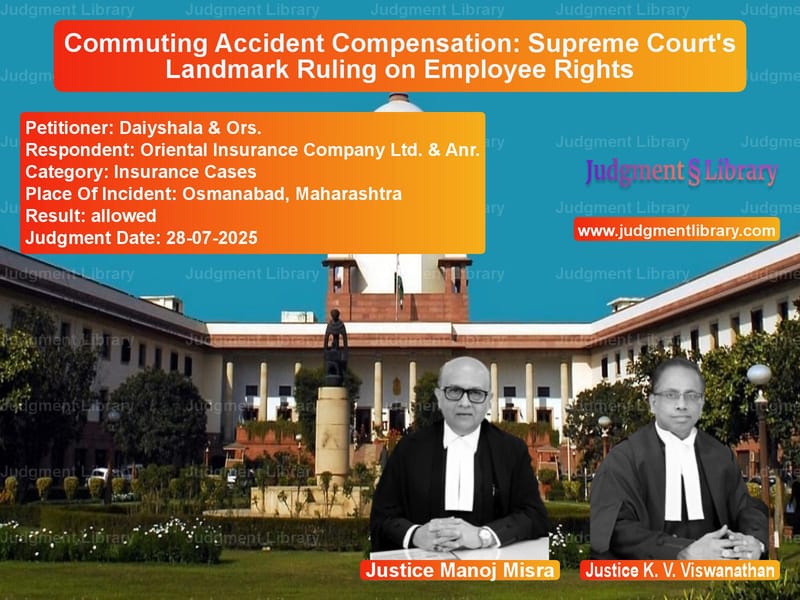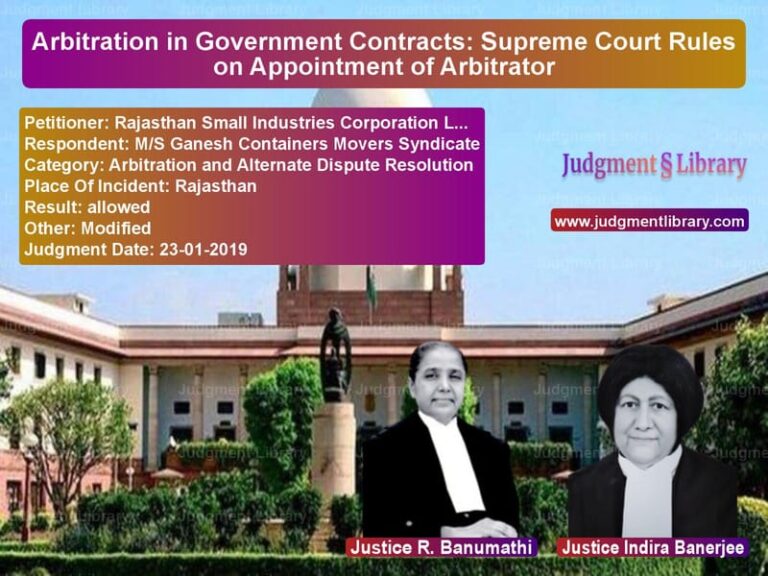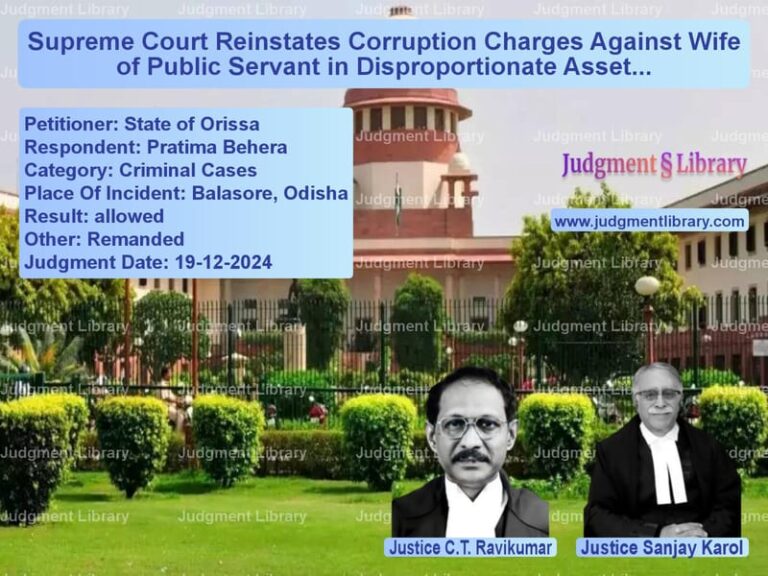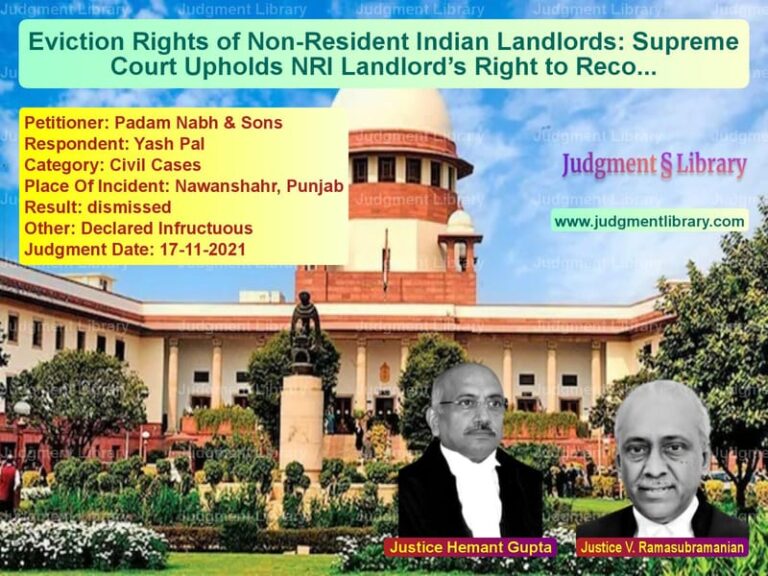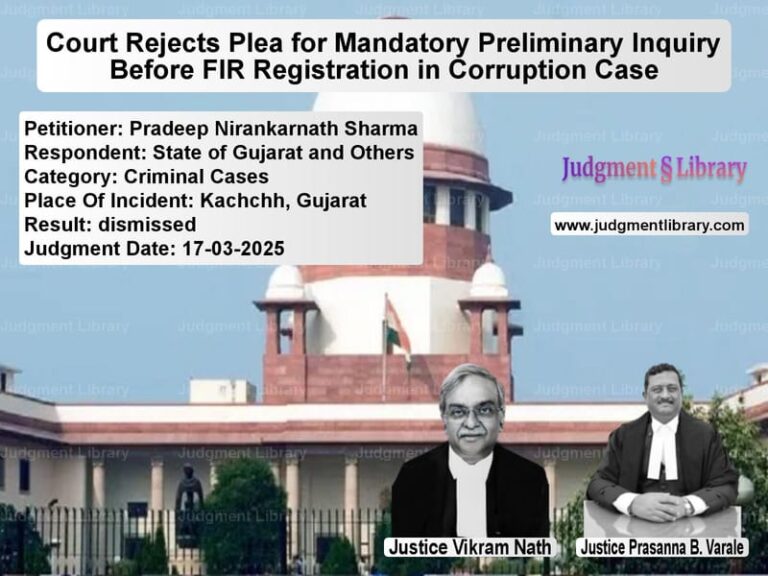Commuting Accident Compensation: Supreme Court’s Landmark Ruling on Employee Rights
The heartbreaking story of Shahu Sampatrao Jadhavar, a watchman who left home for his early morning shift but never returned, has culminated in a landmark Supreme Court judgment that redefines when an accident ‘arises out of employment.’ On April 22, 2003, Shahu set out on his motorcycle to report for duty at the sugar factory where he worked, his shift scheduled from 3 AM to 11 AM. Tragically, just 5 kilometers from the factory, he met with a fatal accident, leaving behind a widow, four children, and his mother. What followed was a legal battle that would span over two decades, questioning whether an accident during commute to work qualifies for compensation under employment laws.
The initial proceedings saw the Commissioner for Workmen’s Compensation rule in favor of Shahu’s family, awarding compensation of Rs 3,26,140 along with interest. However, the insurance company appealed to the High Court, which reversed this decision, holding that since the accident occurred while Shahu was merely on his way to work, it couldn’t be said to ‘arise out of employment.’ This set the stage for the Supreme Court appeal that would ultimately redefine the interpretation of employment-related accidents.
The Legal Battle Begins
Before the Supreme Court, Mr. Atul Babasaheb Dakh, representing the appellant family, made compelling arguments about the nature of Shahu’s employment and the risks inherent in his commute. “Learned counsel for the appellant submitted that looking to the nature of the work of the deceased, the peril which he faced was not something personal rather it was incidental to his employment.” He emphasized the causal connection between employment and accident, invoking the theory of notional extension. Crucially, he pointed out that after the Francis De Costa judgment that the High Court relied upon, Section 51E had been introduced in the ESI Act, fundamentally changing the legal landscape.
On the opposing side, Ms. Amrrecta Swaarup, counsel for the insurance company, maintained the traditional position that employment begins only when the employee reaches the workplace. “Learned counsel for the respondent No.1-Insurance Company submitted that the accident cannot be said to have its origin in the employment. Learned counsel contended that the employment cannot commence until the employee has reached the place of work and what happened before that could not be said to be in the course of employment.” She argued that Shahu was engaged in “a purely personal matter while commuting to or from work” and thus the accident couldn’t be attributed to his employment.
The Historical Legal Context
The Supreme Court delved deep into the historical interpretation of the phrase “arising out of and in the course of employment,” tracing its evolution through numerous cases. The Court noted that this question had “vexed the Courts for very long, resulting in diverse findings based on individual facts.” In the 1958 case of Saurashtra Salt Mfg. Co. v. Bai Valu Raja, the Court had recognized the theory of notional extension, stating: “As a rule, the employment of a workman does not commence until he has reached the place of employment and does not continue when he has left the place of employment, the journey to and from the place of employment being excluded. It is now well-settled, however, that this is subject to the theory of notional extension of the employer’s premises so as to include an area which the workman passes and repasses in going to and in leaving the actual place of work.”
The Court also examined the 1963 judgment in General Manager, B.E.S.T. Undertaking, Bombay vs. Mrs. Agnes, where compensation was granted to the family of a bus driver who died while traveling home in another bus provided by the employer. That case had significantly expanded the concept, holding that “when a driver when going home from the depot or coming to the depot uses the bus, any accident that happens to him is an accident in the course of his employment.”
The Game-Changing Amendment
The pivotal moment in the legal landscape came with the introduction of Section 51E in the ESI Act with effect from June 1, 2010. This provision stated: “An accident occurring to an employee while commuting from his residence to the place of employment for duty or from the place of employment to his residence after performing duty, shall be deemed to have arisen out of and in the course of employment if nexus between the circumstances, time and place in which the accident occurred and the employment is established.”
The Supreme Court had to determine whether this amendment was merely clarificatory of the existing law and thus applicable retrospectively to cases like Shahu’s that predated the amendment. The Court examined the nature of declaratory statutes, noting that “The presumption against retrospective operation is not applicable to declaratory statutes… Usually, if not invariably, such an Act contains a preamble, and also the word ‘declared’ as well as the word ‘enacted’.” After extensive analysis of legal history and the consistent doubts surrounding commuting accidents, the Court concluded that Section 51E was indeed clarificatory and declaratory in nature.
Statutes in Pari Materia
A crucial aspect of the judgment was the Court’s treatment of the ESI Act and EC Act as statutes in pari materia – laws dealing with the same subject matter. The Court explained this legal principle: “It is well settled that where statutes in pari materia serve a common object in absence of any provision indicating to the contrary, it is permissible for a court of law to ascertain the meaning of the provision in the enactment by comparing its language with the other enactment relating to the same subject matter.”
The Court noted that both Acts are beneficial legislations intended as social security measures, with the only difference being that the ESI Act applies to factories and notified establishments while the EC Act covers other employers. Given their common purpose and similar phrasing, the interpretation given to “arising out of and in the course of employment” in one could properly inform its meaning in the other.
The Final Ruling
In its conclusive analysis, the Supreme Court made several groundbreaking determinations. First, it held that Section 51E of the ESI Act is clarificatory and therefore retrospective in operation. Second, it determined that the interpretation flowing from Section 51E should inform the understanding of the same phrase in the EC Act. Most importantly, the Court declared: “We interpret the phrase ‘accident arising out of and in the course of his employment’ occurring in Section 3 of the EC Act to include accident occurring to an employee while commuting from his residence to the place of employment for duty or from the place of employment to his residence after performing duty, provided the nexus between the circumstances, time and place in which the accident occurred and the employment is established.”
Applying this to Shahu’s case, the Court found the necessary nexus established. As a night watchman required to report for duty at 3 AM, traveling to his workplace was intrinsically connected to his employment. The Court allowed the appeal, setting aside the High Court’s judgment and restoring the original compensation award by the Commissioner.
Broader Implications
This judgment represents a significant shift in how commuting accidents are treated under employment law. By recognizing that the journey to and from work can be part of employment when a proper nexus exists, the Court has expanded protection for employees, particularly those like Shahu who work unusual hours or in circumstances where the commute itself carries employment-related risks.
The Court’s reasoning emphasized the beneficial nature of both the ESI Act and EC Act, noting that they are “social welfare legislation meant to benefit the workers and their dependants” and should therefore receive “a liberal construction so as to promote its objects.” This approach ensures that the purpose of these social security legislations – to protect workers and their families – is not defeated by overly technical interpretations.
For Shahu’s family, the judgment brings closure to a 22-year legal battle and ensures they receive the compensation originally awarded. For employees across India, it establishes an important precedent that recognizes the reality that for many workers, the journey to and from work is an integral part of their employment, particularly when specific circumstances like early morning shifts or hazardous routes create a clear connection between the commute and the job itself.
Petitioner Name: Daiyshala & Ors..Respondent Name: Oriental Insurance Company Ltd. & Anr..Judgment By: Justice Manoj Misra, Justice K. V. Viswanathan.Place Of Incident: Osmanabad, Maharashtra.Judgment Date: 28-07-2025.Result: allowed.
Don’t miss out on the full details! Download the complete judgment in PDF format below and gain valuable insights instantly!
Download Judgment: daiyshala-&-ors.-vs-oriental-insurance-c-supreme-court-of-india-judgment-dated-28-07-2025.pdf
Directly Download Judgment: Directly download this Judgment
See all petitions in Compensation Disputes
See all petitions in Employment Disputes
See all petitions in Road Accident Cases
See all petitions in Insurance Settlements
See all petitions in Other Insurance Cases
See all petitions in Judgment by Manoj Misra
See all petitions in Judgment by K.V. Viswanathan
See all petitions in allowed
See all petitions in supreme court of India judgments July 2025
See all petitions in 2025 judgments
See all posts in Insurance Cases Category
See all allowed petitions in Insurance Cases Category
See all Dismissed petitions in Insurance Cases Category
See all partially allowed petitions in Insurance Cases Category

